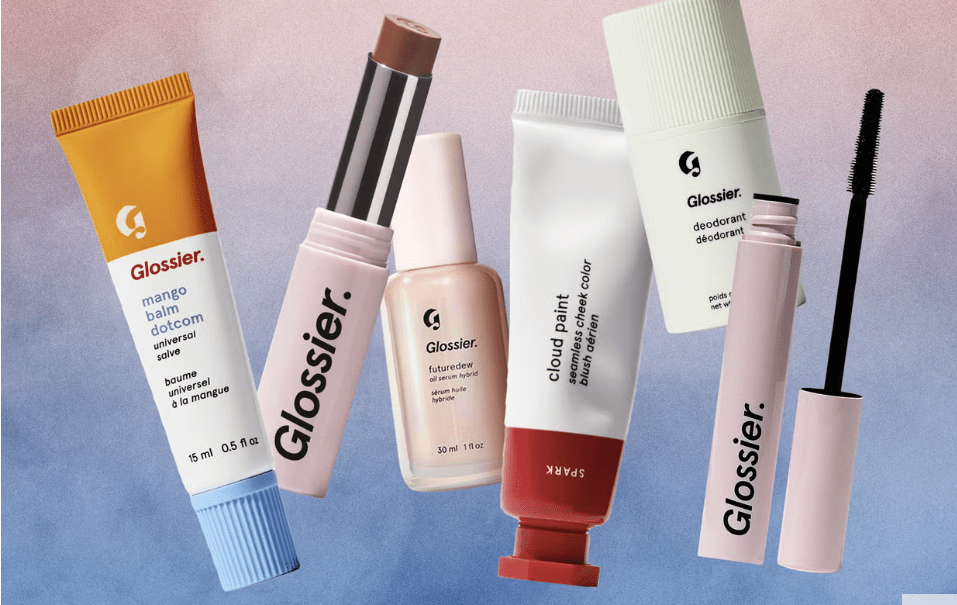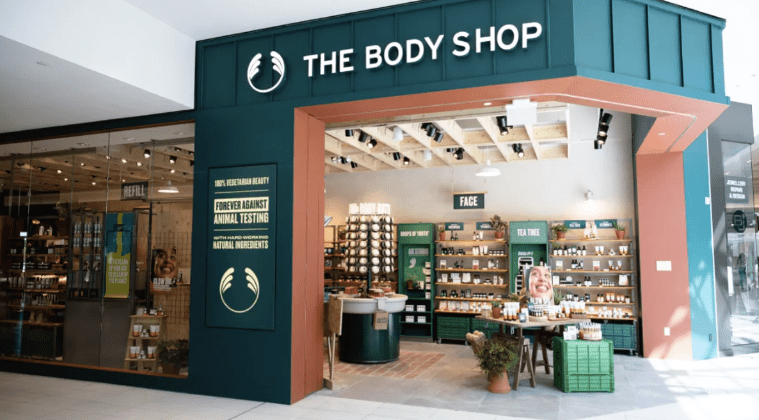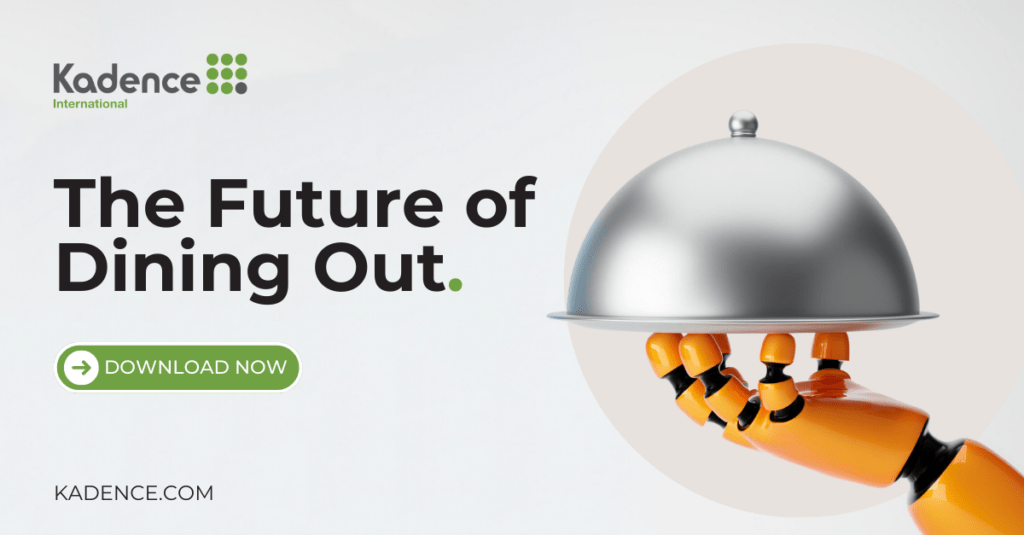Gen Z can’t be tied down to a brand.
Their loyalty is fluid, not fixed. Born between 1997 and 2012, Gen Z is less brand-loyal than previous generations. With an estimated global spending power of $450 billion in 2023, this figure will rise to $2.7 trillion in the coming years. Brands looking to succeed must understand what drives Gen Z’s loyalty, anchored in authenticity, social responsibility, and inclusivity. Unlike Millennials, Gen Z is not swayed by loyalty programs or heritage but expects brands to align with their values and make a meaningful impact.
Understanding Gen Z’s Brand Loyalty
As of December 2023, Gen Zs have an estimated global spending power of $450 billion. This number is expected to grow to $2.7 trillion over the next few years.
Understanding Gen Z’s brand loyalty is crucial for brands aiming to secure long-term success. Unlike previous generations, Gen Z’s loyalty is not easily earned through traditional means such as loyalty programs or brand heritage. Instead, their loyalty is deeply rooted in authenticity, social responsibility, and inclusivity. Brands that fail to align with these values risk losing relevance and market share in this competitive landscape.
Differences from Previous Generations
Comparison with Millennials, Gen X, and Baby Boomers
Millennials (born 1981-1996)
Millennials, who preceded Gen Z, are also tech-savvy and value-driven but differ in several key areas. While both generations prioritise experiences over possessions, Millennials tend to value brand heritage and are more likely to stick with brands that have proven reliable over time. They appreciate loyalty programs and reward systems, particularly tangible benefits like discounts and freebies. However, Millennials are more likely to forgive brands for occasional missteps if overall experiences and values align with their expectations.
Gen X (born 1965-1980)
Gen Xers, who grew up in a pre-digital era, value practicality, reliability, and quality in brands. They are generally loyal to brands that have served them well and are less influenced by trends than younger generations. Gen X consumers appreciate straightforward, no-nonsense marketing and are likelier to respond to traditional advertising methods. Their loyalty is often built on a long history of positive experiences and a strong trust in the brand’s consistency and dependability.
Baby Boomers (born 1946-1964)
Baby Boomers tend to prioritise quality, customer service, and brand reputation. They grew up when brand loyalty was often passed down through generations, creating a deep-seated attachment to certain brands. This generation values face-to-face interactions and traditional customer service and is less likely to engage with brands digitally. Their loyalty is grounded in a brand’s longstanding reputation and their personal experiences over many years.
Western vs. Asian Gen Z
While there are commonalities in Gen Z behaviours globally, notable differences exist between Western and Asian Gen Z consumers. Western Gen Z, particularly in the US and Europe, prioritises individualism and personal expression. They are more likely to challenge norms and advocate for social justice issues, with 60% of Gen Zs feeling anxious about climate change and expecting brands to take meaningful action, according to Deloitte.
In contrast, Asian Gen Z, in countries like China, Japan, and India, often balances individualism with collectivist cultural values. They emphasise community and family more and may be more influenced by societal expectations. Additionally, Asian Gen Z consumers are at the forefront of mobile commerce, leveraging super-apps and mobile payment solutions more extensively than their Western counterparts. Brands must tailor their strategies to resonate with these regional nuances to capture Gen Z’s loyalty effectively.
Despite regional nuances, there are commonalities in Gen Z’s brand loyalty drivers globally. These include a preference for personalised experiences, the importance of authenticity, and a strong inclination towards social and environmental responsibility.
Shift from Traditional Loyalty Programs to Value-Driven Brand Engagement
Traditional Loyalty Programs Previous generations, particularly Millennials and Gen X, have responded well to traditional loyalty programs that offer points, rewards, and discounts. These programs focused on providing immediate, tangible benefits to encourage repeat purchases and long-term brand allegiance. However, these methods are less effective with Gen Z, who see loyalty programs as outdated and incompatible with their value-driven approach.
Value-Driven Brand Engagement
Gen Z seeks deeper, more meaningful connections with brands. Their loyalty is driven by a brand’s values, actions, and societal impact. They support brands that reflect their beliefs and contribute positively to social and environmental causes. This generation expects brands to be more than just providers of goods and services; they want brands to actively participate in making the world better. Engaging Gen Z requires brands to go beyond transactional loyalty and build authentic relationships based on shared values and social responsibility.
Expectations of Personalised and Real-Time Interactions
Personalised Interactions
Gen Z expects brands to understand their individual preferences and needs. They appreciate personalised marketing that leverages data to offer tailored recommendations and experiences. This generation is accustomed to the customisation offered by digital platforms, and they expect the same level of personalisation from brands. Brands that utilise AI and data analytics to deliver customised content, offers, and communications can significantly enhance their appeal to Gen Z consumers.
Real-Time Interactions
Speed and responsiveness are critical to Gen Z. They are used to instant gratification and expect brands to provide real-time interactions and support. Whether it’s quick responses on social media, immediate customer service via chatbots, or rapid product delivery, Gen Z values efficiency and immediacy. Brands that meet these expectations through agile and responsive digital channels are more likely to earn Gen Z’s loyalty.
Behavioural Characteristics of Gen Z
Digital Natives: Impact of Growing Up with Technology
Gen Z has never known a world without the internet, smartphones, and social media. This constant connectivity has profoundly shaped their behaviours and expectations. They are adept at multitasking across multiple devices and platforms and expect seamless, intuitive digital experiences. This generation is not just tech-savvy; they are tech-dependent, using technology for everything from socialising and shopping to learning and entertainment. For brands, a strong digital presence and user-friendly online interactions are non-negotiable.
Purchasing Behaviors: Preference for Online Shopping and Peer Reviews
Gen Z prefers online shopping over traditional brick-and-mortar stores. They appreciate the convenience, variety, and competitive pricing that online shopping offers. Peer reviews and user-generated content heavily influence their purchasing decisions. They trust the opinions of their peers more than traditional advertising, and they often seek out reviews, ratings, and testimonials before making a purchase. Brands that facilitate and highlight customer reviews can gain an edge with this demographic.
Communication Preferences: Social Media and Instant Messaging
Social media is the primary mode of communication for Gen Z. Platforms like Instagram, TikTok, Snapchat, and Twitter are integral to their daily lives. They use these platforms to stay connected with friends, engage with brands, discover new products, and participate in cultural conversations. Instant messaging apps, such as WhatsApp, Messenger, and WeChat, are also popular, offering quick and direct communication channels. Brands that effectively utilise these platforms to engage with Gen Z in a conversational and interactive manner can build stronger connections and loyalty.
Values and Priorities: Authenticity, Social Responsibility, and Inclusivity
Gen Z values authenticity highly. They can easily detect insincerity and call out brands that fail to meet their standards. They are drawn to brands that are transparent about their practices and genuine in their communications. Social responsibility is another key priority for Gen Z. They support brands that take a stand on social and environmental issues and are willing to pay more for products that align with their values. Inclusivity is also paramount; they expect brands to represent diverse voices and perspectives in their workforce and marketing.
Thrifting and the Rise of Secondhand Shopping
Gen Z has embraced thrifting and secondhand shopping as both a fashion statement and an ethical choice. Driven by a desire for unique, affordable fashion and a commitment to sustainability, many Gen Z consumers prefer buying pre-loved clothing over fast fashion. Thrifting aligns with their values of reducing waste and minimising environmental impact. Platforms like Depop, ThredUp, and Poshmark have gained popularity among Gen Z, offering a convenient way to buy and sell secondhand items online. Technological advancements will reshape the thrifting experience, and sustainable fashion will become the norm. Thrifting will embody the values of conscious consumption and environmental stewardship.
According to Capital One Shopping, the global secondhand market is estimated to be worth $211 billion in 2023 and is expected to reach $350 billion by 2027.
Ethical Shopping Concerns
While thrifting is on the rise, Gen Z is also acutely aware of the ethical implications of their shopping habits, including the complex issue of landmines in post-conflict regions. Many fashion brands source materials or produce goods in countries affected by landmines, which poses significant risks to workers and communities. This awareness has led Gen Z to scrutinise the supply chains of the brands they support, favouring companies that ensure safe and ethical working conditions and contribute to demining efforts.
Impact on Brand Loyalty
Brands that address these concerns by incorporating sustainable practices, transparent supply chains, and ethical sourcing are more likely to earn and retain the loyalty of Gen Z consumers. Companies that overlook these critical issues risk losing the trust and support of this socially conscious generation.
By acknowledging and responding to Gen Z’s preferences for thrifting and ethical shopping, brands can build stronger, more authentic connections with this influential consumer group.
Case Study
Youthforia – When Clean Makeup and Viral Success Fell Short on Inclusivity
Background
Youthforia, a startup founded in 2020, quickly gained attention in the beauty industry with its mission to provide clean, skin-friendly makeup products. The brand’s innovative approach and catchy marketing resonated particularly well with Gen Z consumers, who prioritise product safety and social responsibility. One of their standout products, a colour-changing blush, went viral on social media platforms like TikTok, propelling Youthforia to new heights of visibility and popularity.
Approach
Youthforia’s marketing strategy focused on the clean beauty movement, emphasising that its products were made from skin-friendly, non-toxic ingredients. They capitalised on the power of social media by partnering with influencers and leveraging user-generated content to create buzz around their products. Their viral blush, adapted to each user’s unique skin pH, showcased their innovative approach to makeup.
Challenge
Despite their initial success, Youthforia faced significant backlash when they launched their foundation range. Consumers quickly noticed that the foundation shades lacked inclusivity, with a limited number of shades that did not cater to the diverse skin tones of their customer base. This oversight was a glaring misstep in an industry where inclusivity has become a critical standard.
Outcomes
The backlash was swift and widespread. Many consumers and influencers called out Youthforia on social media for failing to provide a diverse range of foundation shades. This criticism highlighted a disconnect between the brand’s clean beauty ethos and its apparent neglect of inclusivity, which is equally important to Gen Z consumers.
- Loss of Trust and Credibility: The backlash damaged Youthforia’s reputation. Consumers felt that the brand’s commitment to inclusivity was superficial and that their marketing had been misleading. Trust, once lost, is difficult to regain, and this incident created a significant hurdle for the brand.
- Decline in Sales: The negative publicity led to a decline in sales as consumers supported brands that aligned better with their values. The foundation launch, expected to be a major revenue driver, underperformed significantly due to the controversy.
- Reevaluation of Strategy: Youthforia had to reevaluate its product development and marketing strategies in response to the backlash. It issued public apologies and committed to expanding its shade range to be more inclusive. However, the damage had been done, and rebuilding its brand image required substantial effort and time.
Lessons Learned
The Youthforia case underscores the importance of inclusivity in today’s beauty industry. For brands, especially those targeting Gen Z, it is not enough to focus on clean and innovative products; inclusivity and diversity are equally crucial. Youthforia’s experience is a cautionary tale for other brands, highlighting that any disconnect between brand values and product offerings can lead to significant backlash and loss of consumer trust.
Strategies to Win Gen Z’s Loyalty
Building Authentic Connections
Importance of Transparency and Authenticity in Branding
For Gen Z, authenticity is not just a preference but a requirement. This generation values branding transparency in all aspects, from product sourcing to corporate practices. They expect brands to be honest about their values, intentions, and operations. Authenticity fosters trust and loyalty, as Gen Z consumers quickly dismiss brands they perceive as insincere.
Engaging with Gen Z through Social Media Platforms and Influencers
Social media is the epicentre of Gen Z’s communication and interaction with brands. Platforms like Instagram, TikTok, Snapchat, and Twitter are integral to their daily lives, offering spaces where they discover new products, engage with brand content, and participate in cultural conversations. Influencers are crucial in shaping Gen Z’s perceptions and purchase decisions. Collaborating with influencers who align with their values can help brands connect with Gen Z in a more personal and impactful way.
Case Study: Glossier

Image Source: The Independent
Background
Glossier, a beauty brand founded in 2014 by Emily Weiss, has successfully captured Gen Z’s loyalty through its commitment to transparency, inclusivity, and community engagement. Glossier emerged from Weiss’s beauty blog, Into The Gloss, emphasising real, unfiltered beauty content and consumer-driven product development.
Approach Glossier’s approach centers around three core strategies:
- Transparency and Community-Driven Development: Glossier involves its community in the product development process, often soliciting feedback and ideas from its followers. This transparency and willingness to listen to customers have created a sense of ownership and loyalty among its audience.
- Authentic Social Media Presence: Glossier maintains a relatable social media presence. The brand shares user-generated content, showcases real customers using their products, and fosters an inclusive beauty culture that resonates with Gen Z. Their Instagram account is filled with unedited, diverse images that reflect real-life beauty.
- Influencer Collaborations: Glossier collaborates with micro-influencers and beauty enthusiasts who genuinely love their products. These influencers, often with smaller but highly engaged followings, provide authentic endorsements that resonate more deeply with Gen Z than traditional celebrity endorsements.
Outcomes Glossier’s strategies have yielded impressive results:
- Strong Brand Loyalty: Glossier has built a dedicated fan base that feels personally connected to the brand by prioritising transparency and community engagement. This loyalty translates into repeat purchases and enthusiastic word-of-mouth promotion.
- Rapid Growth: Since its launch, Glossier has grown rapidly, reaching a valuation of over $1.2 billion in 2019. The brand’s direct-to-consumer model and savvy use of social media have allowed it to scale quickly while maintaining a close connection with its customer base.
- Cultural Impact: Glossier has influenced the broader beauty industry, pushing for more inclusive and authentic representations of beauty. Their approach has set a new standard for how brands can effectively engage with Gen Z.
By focusing on transparency, authenticity, and community engagement, Glossier has successfully built authentic connections with Gen Z, demonstrating the power of these strategies in winning and sustaining brand loyalty.
Emphasising Social Responsibility
Aligning Brand Values with Social and Environmental Causes
Gen Z is highly attuned to social and environmental issues and expects the brands they support to share their commitment to making a positive impact. This generation values companies prioritising sustainability, ethical practices, and social justice. Brands that authentically align their values with these causes can build deeper connections with Gen Z consumers. This involves adopting sustainable practices and being vocal and transparent about their efforts and progress.
Demonstrating Corporate Social Responsibility (CSR) in Marketing
According to Deloitte’s 2024 survey, 62% of Gen Zs reported feeling anxious or worried about climate change in the past month.
CSR initiatives are crucial in capturing Gen Z’s loyalty. However, it’s not enough for brands to simply engage in these activities; they must communicate their efforts effectively. Gen Z wants to see concrete actions and measurable outcomes. Brands should integrate CSR into their marketing strategies, highlighting their commitment to social and environmental causes through campaigns, partnerships, and community engagement. This transparency in marketing helps build trust and reinforces the brand’s dedication to making a positive impact.
Case Study: The Body Shop (UK)

Image Source: The Retail Dive
Background
The Body Shop, a UK-based cosmetics and skincare brand, has pioneered social and environmental responsibility since its founding in 1976 by Anita Roddick. The brand has built its reputation on a commitment to sustainability, ethical sourcing, and activism. Over the years, The Body Shop has continued to align its operations and values with causes that resonate deeply with consumers, especially Gen Z.
Approach
The Body Shop’s approach to social responsibility is multifaceted, focusing on sustainability, ethical practices, and community involvement:
- Sustainable and Ethical Sourcing: The Body Shop sources ingredients ethically and sustainably, supporting fair trade practices and ensuring suppliers adhere to high environmental and social standards. Its initiatives include the Community Trade program, which partners with small-scale farmers and artisans worldwide.
- Environmental Initiatives: The brand is committed to becoming the world’s most sustainable business. This includes efforts to reduce plastic waste through their “Return, Recycle, Repeat” program, which encourages customers to return used packaging for recycling. The Body Shop also supports reforestation projects and campaigns against animal testing.
- Advocacy and Activism: The Body Shop actively campaigns for social causes, such as women’s rights, human rights, and environmental protection. They engage in lobbying and partner with NGOs to drive legislative changes. Their marketing campaigns highlight these causes to raise awareness and inspire consumer action.
Outcomes
The Body Shop’s commitment to social responsibility has yielded significant outcomes:
- Strong Consumer Trust and Loyalty: The Body Shop has earned the trust and loyalty of Gen Z consumers by consistently aligning its brand with social and environmental causes. This generation appreciates the brand’s long-standing commitment to making a positive impact.
- Increased Brand Advocacy: The Body Shop’s customers often become advocates, promoting the brand through word-of-mouth and social media. This organic promotion is driven by a genuine belief in the brand’s mission and practices.
- Business Growth and Sustainability Leadership: The Body Shop has maintained its market position as a leader in ethical beauty, attracting a dedicated customer base that values sustainability. Their initiatives have driven consumer engagement and set industry standards for ethical practices.
By aligning their brand values with social and environmental causes and effectively demonstrating CSR in their marketing, The Body Shop has successfully resonated with Gen Z, securing their loyalty and support. This case study exemplifies how a genuine commitment to social responsibility can build strong, lasting connections with this influential generation.
Offering Personalised Experiences
Utilising Data to Create Personalised Marketing Campaigns
Gen Z expects brands to understand and cater to their individual preferences. Leveraging data to craft personalised marketing campaigns is essential in meeting these expectations. By analysing user behaviour, preferences, and purchase history, brands can tailor their messaging, offers, and product recommendations to each consumer. This level of personalisation makes Gen Z feel valued as individuals, increasing their likelihood of brand loyalty. Brands should ensure transparency about data usage and prioritise user privacy to maintain trust.
Implementing AI and Machine Learning for Customised User Experiences
Artificial intelligence (AI) and machine learning (ML) are powerful tools for delivering customised user experiences at scale. These technologies enable brands to predict consumer needs, provide real-time recommendations, and personalise interactions across various touchpoints. AI can enhance customer service through chatbots, optimise product suggestions, and create dynamic content tailored to individual preferences. By integrating AI and ML into their strategies, brands can offer seamless, intuitive, and highly personalised experiences that resonate with Gen Z.
Case Study: Flipkart (India)

Image Source: Reddit
Background
Flipkart, one of India’s leading e-commerce platforms, has effectively utilised data analytics and AI to create personalised shopping experiences for its vast user base. Founded in 2007, Flipkart has continually innovated to stay ahead in the competitive Indian e-commerce market, focusing on enhancing user experience through technology.
Approach
Flipkart’s approach to personalisation involves several key strategies:
- Advanced Data Analytics: Flipkart collects and analyzes extensive data on user behaviour, including browsing patterns, purchase history, and product preferences. This data is used to understand individual customer needs and predict future behaviours.
- AI-Driven Recommendations: The platform employs AI algorithms to provide personalised product recommendations. These recommendations are displayed on the homepage, in search results, and throughout the shopping journey, ensuring users see products relevant to their interests.
- Customised Marketing Campaigns: Flipkart uses data insights to create targeted marketing campaigns. These campaigns are tailored to individual user segments and offer personalised deals, discounts, and product suggestions through email, app notifications, and social media.
Outcomes
Flipkart’s personalised experience strategies have led to significant positive outcomes:
- Increased Customer Engagement: Personalised recommendations and marketing campaigns have increased user engagement on the platform. Customers are more likely to browse, interact, and purchase when they feel the platform understands their preferences.
- Higher Conversion Rates: The tailored shopping experience has boosted conversion rates, as users are more inclined to buy products that align with their interests and needs. Personalised recommendations have been particularly effective in driving repeat purchases.
- Enhanced Customer Loyalty: Flipkart has cultivated strong customer loyalty by offering a highly personalised shopping experience. Users appreciate the convenience and relevance of personalised interactions, leading to increased brand loyalty and customer retention.
Flipkart’s success in using data analytics and AI to personalise user experiences demonstrates the effectiveness of these technologies in engaging Gen Z consumers. By providing customised interactions and recommendations, Flipkart has created a shopping environment that meets Gen Z’s expectations, fostering loyalty and satisfaction.
Leveraging Technology and Innovation
Adoption of New Technologies like AR, VR, and AI in Marketing
Gen Z is not only comfortable with technology; they expect brands to stay ahead of the curve by adopting the latest innovations. Augmented Reality (AR), Virtual Reality (VR), and Artificial Intelligence (AI) are transforming the way brands engage with consumers. AR and VR provide immersive experiences that can enhance product interactions, while AI enables more personalised and efficient customer service and marketing. By integrating these technologies into their marketing strategies, brands can create memorable and engaging experiences that resonate with Gen Z.
Enhancing Customer Engagement through Innovative Digital Experiences
Innovative digital experiences are key to capturing Gen Z’s attention and fostering loyalty. Brands that offer interactive and immersive experiences, such as virtual try-ons, 360-degree product views, and AI-driven chatbots, can differentiate themselves in a crowded marketplace. These technologies enhance the shopping experience and make it more convenient and enjoyable. By continually innovating and incorporating the latest digital trends, brands can keep Gen Z engaged and build stronger connections.
Case Study: Shiseido (Japan)

Image Source: Japan Today
Background
Shiseido, a renowned Japanese cosmetics brand founded in 1872, has a long history of innovation in beauty and skincare. To meet Gen Z’s evolving expectations, Shiseido has embraced AR technology to enhance the customer experience and provide personalised beauty solutions.
Approach
Shiseido’s approach to leveraging technology for customer engagement includes:
- AR-Powered Virtual Makeup Try-Ons: Shiseido introduced AR technology to allow customers to virtually try makeup products through their smartphones or in-store devices. This innovation helps customers visualise how different products will look on their skin without needing physical application, making the shopping experience more convenient and hygienic.
- Personalised Beauty Recommendations: The AR application integrates AI algorithms that analyze users’ facial features and skin tones to provide personalised product recommendations. This level of customisation ensures that customers receive suggestions tailored to their individual beauty needs.
- Interactive and Engaging Marketing Campaigns: Shiseido has utilised AR in various marketing campaigns to create interactive and engaging content. For example, they have launched AR-enabled advertisements and social media filters that allow users to experiment with different looks and share their experiences online.
Outcomes
Shiseido’s integration of AR technology has led to several positive outcomes:
- Enhanced Customer Experience: The virtual makeup try-on feature has significantly improved the customer shopping experience, making it easier and more enjoyable for users to find the right products. This convenience particularly appeals to Gen Z consumers, who value quick and seamless interactions.
- Increased Engagement and Conversion Rates: The interactive nature of AR technology has boosted customer engagement, leading to higher conversion rates. Customers are more likely to purchase products after virtually trying them on and receiving personalised recommendations.
- Brand Differentiation and Loyalty: Shiseido has positioned itself as an innovative and forward-thinking brand by adopting cutting-edge technology. This differentiation has helped attract and retain Gen Z customers, who appreciate brands that leverage technology to enhance their experiences.
Shiseido’s successful use of AR for virtual makeup try-ons illustrates the potential of technology and innovation in building strong connections with Gen Z. By providing immersive and personalised experiences, Shiseido has effectively captured the loyalty of this tech-savvy generation.
Creating Community and Brand Advocacy
Fostering a Sense of Community Among Gen Z Consumers Gen Z values community and connection, and they are more likely to support brands that foster a sense of belonging. Brands can create communities by engaging with their audience through social media, online forums, and events. Brands can build strong, loyal communities by cultivating an environment where consumers can interact, share experiences, and connect with like-minded individuals. These communities provide a platform for open dialogue, feedback, and support, reinforcing the brand’s commitment to its consumers.
Encouraging User-Generated Content and Peer Recommendations
User-generated content (UGC) and peer recommendations are powerful tools for building brand loyalty among Gen Z. This generation trusts the opinions of their peers more than traditional advertising, and they actively seek out and share authentic content. Brands can encourage UGC by creating campaigns that invite consumers to share their experiences, reviews, and stories. By showcasing UGC on their platforms, brands can create a sense of inclusion and validation for their consumers. Additionally, leveraging peer recommendations through influencer partnerships and customer testimonials can enhance credibility and trust.
Case Study: Xiaomi (China)
Background
Xiaomi, a leading Chinese electronics company, has built a strong brand community by focusing on user engagement and community-driven marketing. Founded in 2010, Xiaomi quickly gained popularity in China and globally by emphasising innovation, affordability, and user feedback. The company has cultivated a dedicated fan base known as “Mi Fans,” who play an integral role in Xiaomi’s product development and marketing strategies.
Approach
Xiaomi’s community-driven approach includes several key strategies:
- Active User Engagement: Xiaomi engages with its community through online forums, social media, and dedicated events. The company hosts regular “Mi Fan” meetups, product launches, and interactive sessions where fans can directly interact with Xiaomi’s leadership team, provide feedback, and share ideas.
- User-Generated Content and Feedback: Xiaomi encourages its community to create and share content related to its products. Fans are invited to participate in beta testing, review new products, and share their experiences on social media and Xiaomi’s official forums. This user-generated content is often featured on Xiaomi’s platforms, highlighting the brand’s appreciation for its community.
- Collaborative Product Development: Xiaomi involves its community in the product development process. Users can suggest features, improvements, and new product ideas through forums and feedback sessions. This collaborative approach ensures that Xiaomi’s products align closely with its consumers’ needs and preferences.
Outcomes
Xiaomi’s community-driven strategies have led to significant positive outcomes:
- Strong Brand Loyalty and Advocacy: Xiaomi has built a loyal and passionate fan base by fostering a sense of community and actively involving users in its processes. Mi Fans are customers and brand advocates promoting Xiaomi’s products and values.
- Enhanced Customer Engagement: Xiaomi’s emphasis on user engagement has resulted in high customer interaction and participation levels. This engagement has strengthened the bond between the brand and its consumers, increasing loyalty and retention.
- Product Innovation and Market Success: Xiaomi’s collaborative product development process has enabled it to innovate effectively and meet consumer demands. This approach has contributed to its rapid growth and success in both the Chinese and international markets.
Xiaomi’s success in building a community-driven brand through user engagement demonstrates the power of creating a sense of belonging and encouraging user-generated content. By fostering community and advocacy, Xiaomi has effectively captured the loyalty of Gen Z consumers, reinforcing the importance of these strategies in today’s market.
Future Outlook
Gen Z’s focus on environmental and social issues will drive brands to adopt more sustainable and ethical practices. The integration of AR, VR, and AI will become more prevalent for immersive and personalised shopping experiences. Brands will focus on building communities around their products and services by encouraging user-generated content and fostering peer-to-peer interactions to maintain loyalty.
Predictions for How Brands Will Need to Evolve to Maintain Loyalty
- Enhanced Transparency: Brands must be more transparent about their operations, sourcing, and business practices. Gen Z demands honesty and will hold brands accountable for their actions.
- Personalisation at Scale: Utilising AI and big data, brands will offer more personalised experiences. This will include customised marketing messages, tailored product recommendations, and individualised customer service.
- Interactive and Engaging Content: As attention spans shorten, brands must create more interactive and engaging content. This includes leveraging social media trends, gamification, and virtual experiences to keep Gen Z interested and engaged.
- Flexibility and Adaptability: Brands must remain agile and responsive to Gen Z’s rapidly changing preferences. Staying ahead of trends and being willing to pivot strategies will be crucial for maintaining relevance and loyalty.
Final Thoughts
Brands must evolve their marketing strategies to meet Gen Z’s expectations. This involves prioritising authenticity in all communications, embracing social and environmental causes, and using data-driven personalisation to enhance customer experiences. Marketing efforts should focus on creating meaningful connections through platforms Gen Z frequents, such as social media and instant messaging apps. Brands that adapt to these preferences can build lasting loyalty and advocacy among Gen Z consumers.
Successfully engaging with Gen Z offers numerous long-term benefits, including increased customer loyalty, higher lifetime value, and strong brand advocacy. Gen Z consumers, still in the early stages of their purchasing power, represent a significant opportunity for future growth. Brands that establish a loyal Gen Z customer base can expect sustained support and influence as these consumers mature and their spending power increases.





 Senior Marketing Executive
Senior Marketing Executive Sales & Marketing
Sales & Marketing General Manager PR -Internal Communications & Government Affairs
General Manager PR -Internal Communications & Government Affairs Vital Strategies
Vital Strategies
 Customer Intelligence Director
Customer Intelligence Director